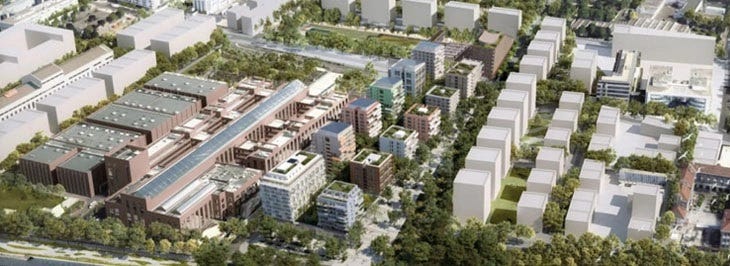How the Paris 2024 Olympics Revolutionized Construction with BIM
The Paris Olympics 2024 witnessed the closing ceremony of a record-breaking two-week showcase of enthusiasm and zest from various athletes.

The Paris Olympics 2024 aimed, and has now claimed, to be one of the most sustainable games ever with an emphasis on reduced carbon footprint, reuse of resources, and redistribution of energy.
With around 35 stadiums hosting 15 million visitors, this grand undertaking required a strong built form and efficient planning to maintain these spaces throughout the games. Building Information Modeling (BIM) played a prominent role in positioning the 2024 games at the forefront of innovation infused with sustainability.
BIM Initiatives for the Paris Olympics 2024
Building Information Modeling (BIM) played an integral role in several key projects for the Paris Olympics 2024. The list of initiatives includes:
The Olympic Village:
It was designed to host 17,000 athletes during the games. The designers leveraged BIM to ensure an adaptable, flexible, and future-proof construction, facilitating the post-games reuse of the infrastructure.

Plaza de La Concordia (Urban Sports Pavilion):
This avant-garde facility was designed to host skateboarding and sports climbing events with the integration of BIM.

The use of BIM enabled the designers to create a built form that adheres to Olympic regulations and can be utilized by the local community after the games.
The State de France:
The national stadium of France was renovated for the Paris Olympics 2024, and hosted the opening and closing ceremonies, as well as the athletics finals.

BIM played a critical role during the renovation process in planning the upgrades that ensured efficient and timely completion of the venue.
Aquatic Center:
It was a newly designed structure that hosted swimming, water polo, and diving events. BIM integration into the design of the venue ensured ease of accessibility and movement for individuals with disabilities.

The rooftop of the center has a concave rooftop and a massive wooden structure which reduces the 30% of the air volume to be heated.
Shaping the Future of Building Construction with BIM
Building Information Modeling (BIM) software is an ideal approach to incorporate strategies to reduce, repurpose, and reuse venue design and execution.
The BIM model provides a detailed design analysis, providing specific dimensions and material specifications to renovate existing structures and to build temporary structures.
BIM integration fosters seamless collaboration and communication among project stakeholders by providing a unified digital model, minimizing misconceptions, and ensuring consistent efforts.
Enhanced Asset Management
BIM models are digital twins of the built form, enabling efficient facility management throughout the building lifecycle.
Early Conflict Detection
BIM models run a thorough design analysis and enable the early identification of design conflicts, such as oversized beams, or pipe intersections.
Systematic Planning and Scheduling
Using BIM for project design and development facilitates the creation of detailed construction plans and scheduling different project phases.
Conclusion
The implementation of BIM at the Paris Olympics 2024 is not only setting a revolutionary benchmark for future sports events but also symbolic of the power of technology to transform the AEC industry.
Original Source : How did the Paris Olympics 2024 revolutionize construction with BIM?
Insightful Article:
Hiring In-House Architect vs Dedicated Remote Architect: Identifying The Suitable Choice
Rapid Onboarding for the AEC Industry: Hire Top 1% Architects and Engineers in 3 Days